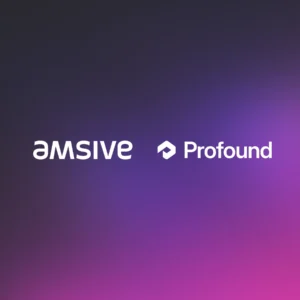Embracing a data-centric approach to acquisition in insurance marketing is a winning strategy.
Out of all the challenges, ups and downs, and ever-evolving situations insurers have found themselves dealing with in the marketplace, there is only one true constant need: customer acquisition[amsive_tooltip term=”customer-acquisition”]. The lifeblood of any business, insurance customer acquisition costs hold a particular significance. Acquisition marketing has driven an imbalance for established companies and disruptors alike, giving insurance carriers the highest customer acquisition costs of any industry. The average cost of insurance customer acquisition rose to $900 per customer, but it doesn’t need to be that way. Lower customer acquisition costs[amsive_tooltip term=”customer-acquisition-cost”] mean companies must use the right data.
Competition for new eyeballs and prospects has only increased over the pandemic. It now costs five times more to attract new customers than it does to nurture existing ones. Costs remain high partly because insurers tend to primarily rely on outdated acquisition methods. They feel that to cut through such highly competitive marketing, spending big, and establishing the greatest presence means winning the acquisition game.
But most insurers can’t compete with that amount of spend that casts too wide of a net. It’s too unfocused and expensive to push out mass marketing across such a wide spectrum. There’s no need to spend money marketing to people who don’t need what an insurer is offering. A more tailored approach is needed.
Getting Personalized for Insurance Customers
Today’s consumers are far too busy and are bombarded with such a high volume of offers across channels, they only tend to focus on what they want or need in the moment. Insurers must meet them at that moment — but how?
Consumers are inherently different — especially in intent and circumstance. Some may shop for insurance, but aren’t yet policyholders; others may be current policy-holders that are shopping for insurance with other companies; yet still, there may be new insurance consumers who will need insurance but haven’t started shopping yet. But even that doesn’t capture the granular picture of unique and personalized intent for acquisition.
Some take a direct path to buy insurance, while others react to their own changing needs — we’re talking about factors like marriage, welcoming a new child, leasing an apartment, buying a car or a home for the first time, starting a business, or retiring, just to name a few.
Marketing powered by acute consumer insights is no longer just a nice-to-have. To win with insights, and make a real difference in driving down acquisition excess, insurers must be able to harness the power of data.
Winning the Acquisition Game With Data
A pre-pandemic study found that 43 percent of senior-level insurance company decision-makers[amsive_tooltip term=”decision-maker”] felt that their current data sources fell short of identifying prospects and programs to drive maximum profit opportunities. Today’s insurance carriers need the tools and programs to acquire new policyholders and increase customer value. But those insurers that can’t compete with big volume spend need to win with the right customer insights and data intelligence.
By engaging policyholders at exactly the right time on their journey, the ideal scenario creates multi-line policyholders and reduces churn. This involves moving beyond creating basic audience strategies. It’s a challenge that holds insurers back unless they have the right marketing partners to show them the way. It starts with a few simplified steps.
1. Who — Demographic, Financials, Lifestyle, Health and Wellness, Etc.
Insurers must be able to use a combination of existing customer data combined with offline and online data to deliver a complete 360° view of the optimal target audience.
2. How — Products and Services, and Purchase Trends
Offline data collection on in-market consumers provides strong purchase signals to illuminate buying behaviors. This helps build a robust understanding of consumer intent to guide your strategy, targeting, and messaging.
3. What — Online Behaviors
Factors like search history, clicks, downloads, and more provide key signals to tell insurance marketers what consumers are interested in, researching and considering.
Insurers that can successfully integrate these sorts of basic strategies can turn each potential customer into a loyal audience without breaking the bank. Instead of spending precious marketing dollars on products that people don’t need, want, or don’t qualify for, insurers can harness data to know exactly where targeted consumers are in their journey to complete successful acquisition strategies. But only if the insurers do what the data tells them.






